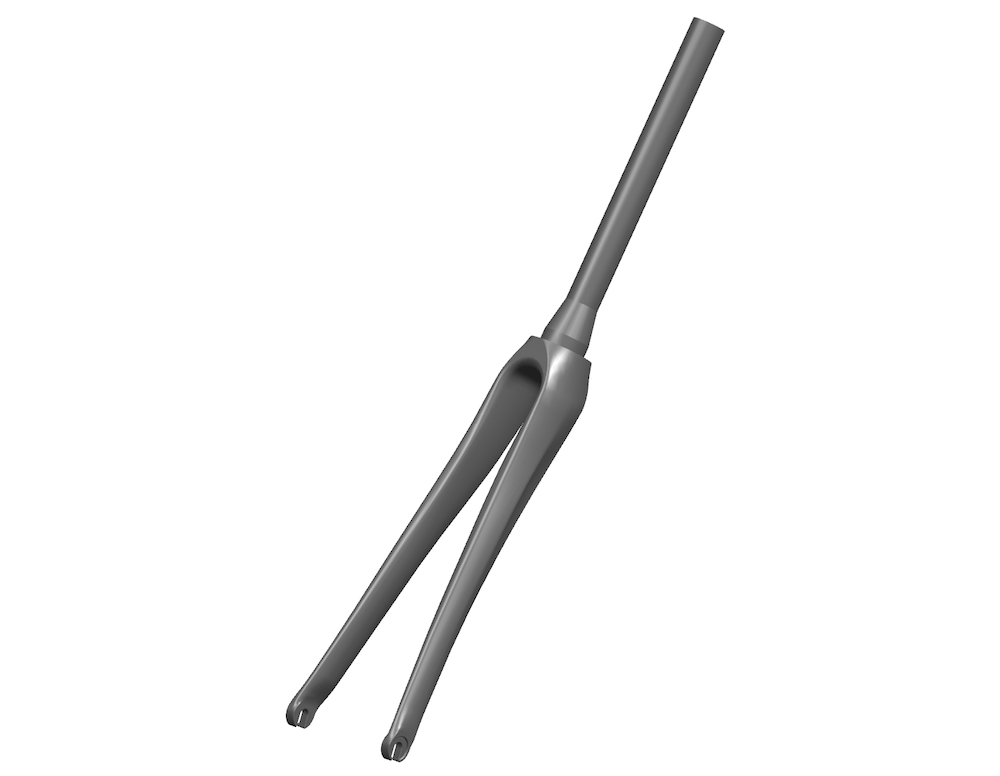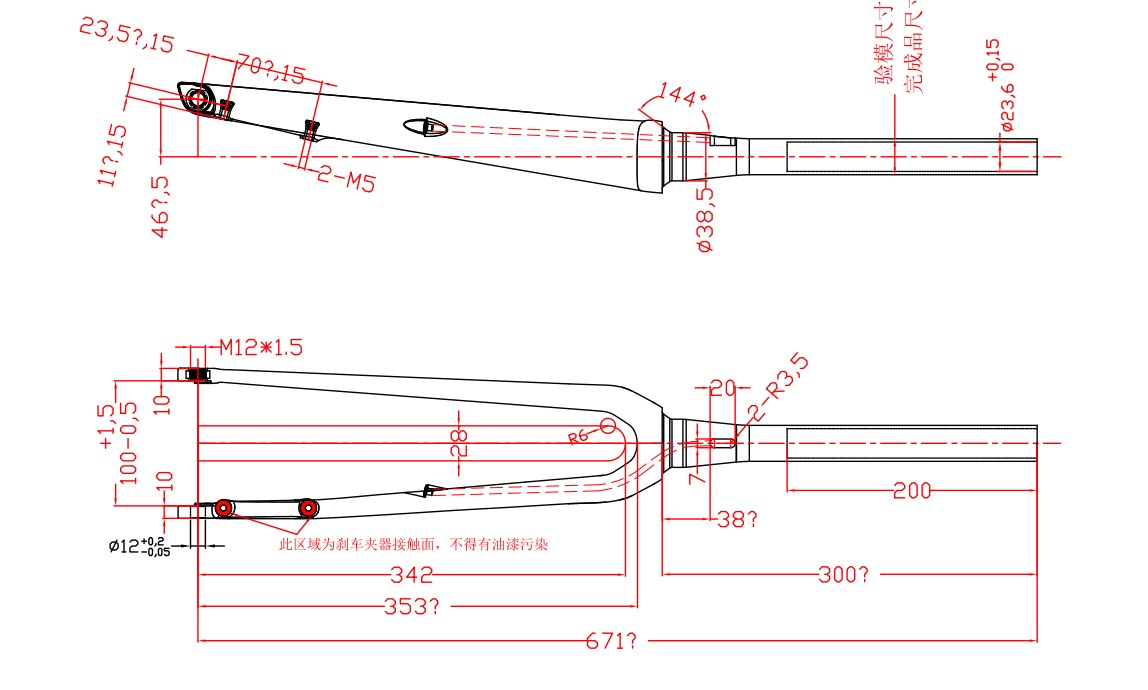Categories
New Blog
Tags
 Most people build a fillet brazed Road or Gravel bike (frame) in our frame building course. Generally you don’t have time to build a fork, even if you would like to, as you need the full 5 Days for just the frame. Fortunately, there are many options available for forks that should suit your needs. Most people look for a carbon fork, as they do have some big advantages. They are quite a bit lighter than their steel counterparts. Carbon forks generally weigh around 350-500g, compared to over 1kg for some steel forks. Most people also want to build a more modern looking road or gravel bike, and the wider fork blades of the carbon forks generally fit to the larger diameter tubing that most people choose. But if you prefer steel, there are some options here as well, and we will try to cover all the bases in this post.
Most people build a fillet brazed Road or Gravel bike (frame) in our frame building course. Generally you don’t have time to build a fork, even if you would like to, as you need the full 5 Days for just the frame. Fortunately, there are many options available for forks that should suit your needs. Most people look for a carbon fork, as they do have some big advantages. They are quite a bit lighter than their steel counterparts. Carbon forks generally weigh around 350-500g, compared to over 1kg for some steel forks. Most people also want to build a more modern looking road or gravel bike, and the wider fork blades of the carbon forks generally fit to the larger diameter tubing that most people choose. But if you prefer steel, there are some options here as well, and we will try to cover all the bases in this post.
How to choose a fork
When thinking about choosing a fork there are a few simple things to consider, regardless of which material you might prefer.
Tire Clearance – this is the first question you need to answer for yourself. How wide should the tires be on your new bike? All forks are designed around a maximum tire size that will fit. You can always run smaller tires, and sometimes a bit larger tire will fit in your fork than is actually specified, but usually not too much. There is no right answer to this question. It depends on where you want to ride, and how you ride. Normal road bike forks usually have clearance up to 28mm, a few go a bit wider. Then there are ‘Gravel’ forks that go to around 40mm, which can also work well on a ‘Road’ bike where you would like the option of going a bit wider. Then there are many forks that top out at around 47 or 48mm, usually have eyelets for racks and fenders, and perhaps an internal guide for a dynamo cable. Or, if you plan to do mostly off-road touring on variable terrain, there are also options for MTB width tires of around 55mm or even a bit more.
Cable routing – internal or external? Most people prefer the look of internal cable routing. It comes at the expense of increasing the complexity when you need to work on the bike. If you need to remove the brake, and the brakes are hydraulic and internally routed, you have to cut the brake line. When you put the bike back together, you will need to bleed the brakes. With external cable routing you can simply remove the brake and levers, and re-install them. Much easier. Finally, there are also a few forks available for fully-integrated cables. Fully integrated cable routing means that the brake cables run from the levers, into the bars, through the stem, and into the head tube, usually by way of a special headset. The rear brake line enters the down tube via a large hole in the head tube – down tube joint, and the front brake line enters the fork through a hole in the steerer tube. Interested in building a frame for fully integrated cables? Read our article on this topic here.
Extras – some forks have a few extra features that you may or may not be interested in. The first is eyelets for a fender. Most road forks do not have these. Most gravel and bike packing or trekking forks do. Some forks have mounts for a lowrider front rack, some forks have three extra mounts for large bottle cages (anything cages from Salsa, for example) where you can attach lighter weight items like a sleeping bag, small tent, or a sleeping pad, without an extra front bag. Finally, some forks offer internal routing for a front dynamo.
For you tall guys and girls out there, one thing to consider is that most carbon forks have a steerer tube that is 300mm long. That is long enough for most of us, but if you are scratching the 2m mark or more, and want to have the bars relatively high compared to the saddle, the 350mm steerer tube length could be helpful to fit you on the bike the way you want to sit. This starts to be an issue if your head tube is longer than around 220mm. Once we have a drawing for your new frame, we can see whether or not you would require a 350mm steerer tube.
The last item to consider is the brake mount standard. Most forks these days are flat mount, as for road and gravel bikes the IS or Post Mount standard has mostly been replaced by the flat mount brake mount standard. However some forks do still exist with an IS or PM standard.
From here on we have organised our discussion according to the type of bike you’d like to build. Road or Gravel….
Road Disc
The brake cable is routed internally, which most people prefer. Tire clearance goes to 30mm. The fork steerer is tapered, 1 1/4, which looks better with the 44mm head tube which most people choose. The only disadvantage is the head set options for an 1 1/4 tapered fork are comparatively limited compared to an 1 1/2 tapered steerer. If you prefer a 1 1/2 steerer, Columbus also offers the Futura Disc which is almost the same as the SLX version, but with 28mm tire clearance.
Gravel and Adventure Bikes – for tires wider than 40mm
The main question here is how much tire clearance do you need. Some fit tires up to 47mm without a fender in 700c. The forks are the same, except that the fork has eyelets for cage mounts and an internal guide for a dynamo cable.
Sour Bicycles also recently released a carbon fork similar to the Cross +. It has all the features you need, rack mount, internal wiring and brake line, and has the special feature that the fork can be used with a low rider front rack, and can hold up to 7,5kg per side. Some of the carbon forks are not designed for a low rider front rack, and can only hold a couple of Kgs per side. It fits tires up to 55mm.
If you plan to do mostly off-road touring, on rougher terrain, A good option with 700c you can fit tires to 58mm (2,25”) which is as much as many mountain bikers feel they need to run. The routing for the dynamo cable and the brake line are both internal. This fork is also ready for fully internal cable routing. Another option is Adventure fork, it pretty much has the same specs , but does not have the hole in the steerer for fully internal cable routing.
Still can’t find what you’re looking for? Take a look at this list of forks. and you might find it pretty useful if you are looking for something that we haven’t covered here. If you have any questions or need a recommendation, just get in touch!
We are a factory to produce carbon forks in China. if you want carbon bikes forks, We can usually offer you the same prices as you can find on-line, and your order helps us to keep doing what we do! Just send us a mail and let us know which fork you would like.

NOTE: ARTICLE FROM WESITE